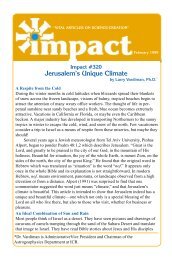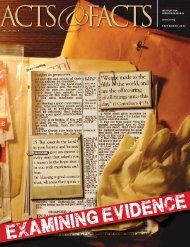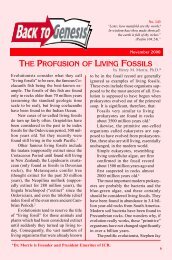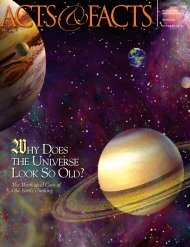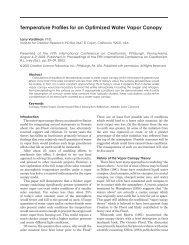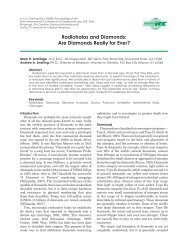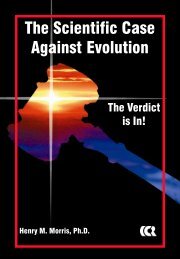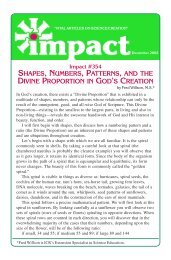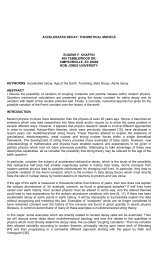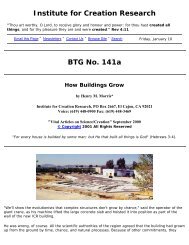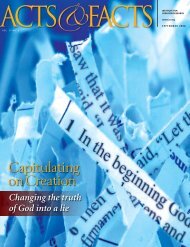656 Steven W. Boydensured the statistical validity <strong>of</strong> the study. 42 Also to guarantee statisticalvalidity a necessary condition <strong>for</strong> the <strong>in</strong>clusion <strong>of</strong> a text was that thef<strong>in</strong>ite verb count not be too low. Thirty was the lower limit <strong>for</strong> the study.Consequently, short contiguous narratives were grouped together andpsalms were grouped by author (if <strong>in</strong>dicated <strong>in</strong> the superscription), type,collections, and so <strong>for</strong>th. Another th<strong>in</strong>g avoided was widely divergenttext sizes. Long texts, there<strong>for</strong>e, were subdivided <strong>in</strong>to smaller units.How can <strong>Biblical</strong> <strong>Hebrew</strong> narratives be identified? In addition towhat was said <strong>in</strong> Section 3.4 above, <strong>Biblical</strong> <strong>Hebrew</strong> narratives—justas narratives <strong>in</strong> any other literature—tell a story, with a sett<strong>in</strong>g, thetime and place <strong>in</strong> which the events <strong>of</strong> the story unfold; character(s),the person or persons who do and say th<strong>in</strong>gs <strong>in</strong> the story or have th<strong>in</strong>gsdone or said to them; and the plot. Plot <strong>in</strong>volves two movements. Thefirst is a movement from a situation <strong>in</strong> which the characters are <strong>in</strong>equilibrium with one another to one where the characters are no longer<strong>in</strong> equilibrium. They encounter a situation that places them <strong>in</strong> dangeror <strong>in</strong>troduces an unrealized expectation. This last situation is unstableand demands resolution. This resolution is the second movement:the characters move to a new equilibrium. L<strong>in</strong>guistically, narrativesare characterized by lexical transparency, normal syntax, and literallanguage.<strong>Biblical</strong> <strong>Hebrew</strong> poetry also is not difficult to identify. First <strong>of</strong> all (asdiscussed <strong>in</strong> Section 3.1 above), <strong>in</strong> the oldest complete manuscript <strong>of</strong>the <strong>Hebrew</strong> Bible, the Len<strong>in</strong>grad Codex B19a, a few texts are laid out asverse: the Song <strong>of</strong> the Sea, the Balaam Oracles, the Song and Bless<strong>in</strong>g<strong>of</strong> Moses, the Song <strong>of</strong> Deborah, the Song <strong>of</strong> David (2 Samuel 22), theF<strong>in</strong>al Words <strong>of</strong> David (2 Samuel 23) and Psalms 119 and 136. Second,poetry has a different poetics from narrative [see Sections 3.2 and 3.3above]. Third, poetry differs from narrative <strong>in</strong> its <strong>in</strong>tended effects.The <strong>Biblical</strong> poet wants his readers to see, hear, smell, feel, and tastewhat he is experienc<strong>in</strong>g. He is seek<strong>in</strong>g to evoke his readers’ emotionsand experiences. He does this by creat<strong>in</strong>g vivid un<strong>for</strong>gettable images,which resonate with his readers.By apply<strong>in</strong>g the criteria discussed above the two populations wereidentified—295 narrative texts and 227 poetic texts.
Evidence <strong>for</strong> an Historical Read<strong>in</strong>g <strong>of</strong> Genesis 1:1–2:3 6575.2 The Null HypothesisTo determ<strong>in</strong>e the <strong>in</strong>ferential potential <strong>of</strong> the ratio <strong>of</strong> preterites to f<strong>in</strong>iteverbs the null hypothesis H 0and the alternative H 1were put <strong>for</strong>th asfollows:H 0: All logistic regression classification models, <strong>in</strong> which the relativefrequency <strong>of</strong> preterites is the only <strong>in</strong>dependent variable, classify textsaccord<strong>in</strong>g to genre no better than random classification.This is tested aga<strong>in</strong>st the alternative hypothesis:H 1: There is a classification model that classifies texts by genre betterthan random classification.5.3 The Random SampleIn order to ensure that texts from all periods and from all three parts<strong>of</strong> the <strong>Hebrew</strong> Bible (Torah, Prophets, and Writ<strong>in</strong>gs) were <strong>in</strong>cluded<strong>in</strong> the analysis, a stratified random sample was generated. Also, thissample <strong>in</strong>cluded extra texts to replace any primary texts rejected <strong>for</strong>violat<strong>in</strong>g any <strong>of</strong> the conditions stated above.The breakdown <strong>of</strong> the narrative text <strong>in</strong> the sample is: Torah (15 out <strong>of</strong>87, 2 extra); Former Prophets (21 out <strong>of</strong> 138, 3 extra); Latter Prophets (2out <strong>of</strong> 11, 2 extra); and Writ<strong>in</strong>gs (10 out <strong>of</strong> 59, 2 extra). The breakdown<strong>of</strong> the poetic texts <strong>in</strong> the sample is: Torah (3 out <strong>of</strong> 13, 2 extra); FormerProphets (3 out <strong>of</strong> 12, 2 extra); Latter Prophets (23 out <strong>of</strong> 104, 3 extra);and Writ<strong>in</strong>gs (22 out <strong>of</strong> 98, 3 extra).5.4 Visualiz<strong>in</strong>g the DataAga<strong>in</strong> BibleWorks 5.0 was used to count the verbs <strong>for</strong> each text. Thedata is tabulated <strong>in</strong> Appendix B <strong>in</strong> Tables B1–B8.3-D bar graphs and scatter plots visually present the data. 3-D bargraphs display the relative frequency <strong>of</strong> f<strong>in</strong>ite verbs. For the 3-D bargraphs (Figures 4–5) the colors <strong>for</strong> the relative frequencies <strong>of</strong> preterites,imperfects, perfects and waw-perfects are green, red, yellow, and blue,respectively (go<strong>in</strong>g back <strong>in</strong>to the page on the y-axes). The passages
- Page 1 and 2: Chapter 9Statistical Determination
- Page 3 and 4: Evidence for an Historical Reading
- Page 6 and 7: 636 Steven W. Boydan historical rea
- Page 8 and 9: 638 Steven W. Boydapproaches this t
- Page 10 and 11: 640 Steven W. BoydThe coherence pri
- Page 12 and 13: 642 Steven W. Boyd3. Problems of a
- Page 14 and 15: 644 Steven W. Boydformat, but the t
- Page 16 and 17: 646 Steven W. Boydis too subjective
- Page 18 and 19: 648 Steven W. Boydthey are highly s
- Page 20 and 21: 650 Steven W. Boydof events is impo
- Page 22 and 23: 652 Steven W. BoydThe first questio
- Page 24 and 25: 654 Steven W. Boyd0.8037Ratio of Pr
- Page 28 and 29: 658 Steven W. Boyd1.00.90.80.70.60.
- Page 30 and 31: 660 Steven W. Boyd1.00.90.80.70.60.
- Page 32 and 33: 662 Steven W. BoydAs in Figures 6 a
- Page 34 and 35: 664 Steven W. Boydmodel with all B
- Page 36 and 37: 666 Steven W. Boydfor a one variabl
- Page 38 and 39: 668 Steven W. BoydClassification wa
- Page 40 and 41: 670 Steven W. Boydpoetry.With this
- Page 42 and 43: 672 Steven W. Boydentire population
- Page 44 and 45: 674 Steven W. Boyd1.00.9Probability
- Page 46 and 47: 676 Steven W. Boydnot poetry, with
- Page 48 and 49: 678 Steven W. BoydAbraham is noted
- Page 51: Evidence for an Historical Reading
- Page 54 and 55: 684 Steven W. Boydto Ashdod, they
- Page 56 and 57: 686 Steven W. Boydthe account of th
- Page 58 and 59: 688 Steven W. BoydBalaam tried to c
- Page 60 and 61: 690 Steven W. BoydI have given Ar a
- Page 62 and 63: 692 Steven W. Boydtruth claim of in
- Page 64 and 65: 694 Steven W. Boyd(3) the Samson pe
- Page 66 and 67: 696 Steven W. BoydImperfects/Finite
- Page 68 and 69: 698 Steven W. BoydAlso, logistic re
- Page 70 and 71: 700 Steven W. BoydTable B4. Finite
- Page 72 and 73: 702 Steven W. BoydTable B8. Finite
- Page 74 and 75: 704 Steven W. Boydcoefficients mode
- Page 76 and 77:
706 Steven W. BoydaThis story does
- Page 78 and 79:
708 Steven W. BoydTable D5. Chronol
- Page 80 and 81:
710 Steven W. BoydTable D6. Functio
- Page 82 and 83:
712 Steven W. BoydTable D8. Tempora
- Page 84 and 85:
714 Steven W. Boydseventh day, and
- Page 86 and 87:
716 Steven W. Boydas a standard for
- Page 88 and 89:
718 Steven W. Boydpoetic sensibilit
- Page 90 and 91:
720 Steven W. Boydby what precedes
- Page 92 and 93:
722 Steven W. Boyd43. Pampel [2000,
- Page 94 and 95:
724 Steven W. Boyd57. These were id
- Page 96 and 97:
726 Steven W. Boydthe major disjunc
- Page 98 and 99:
728 Steven W. Boydpp. 321-334, Zond
- Page 100 and 101:
730 Steven W. BoydFokkelman, J. P.,
- Page 102 and 103:
732 Steven W. BoydUniversity Press,
- Page 104:
734 Steven W. BoydWeil, G. E., Bibl



